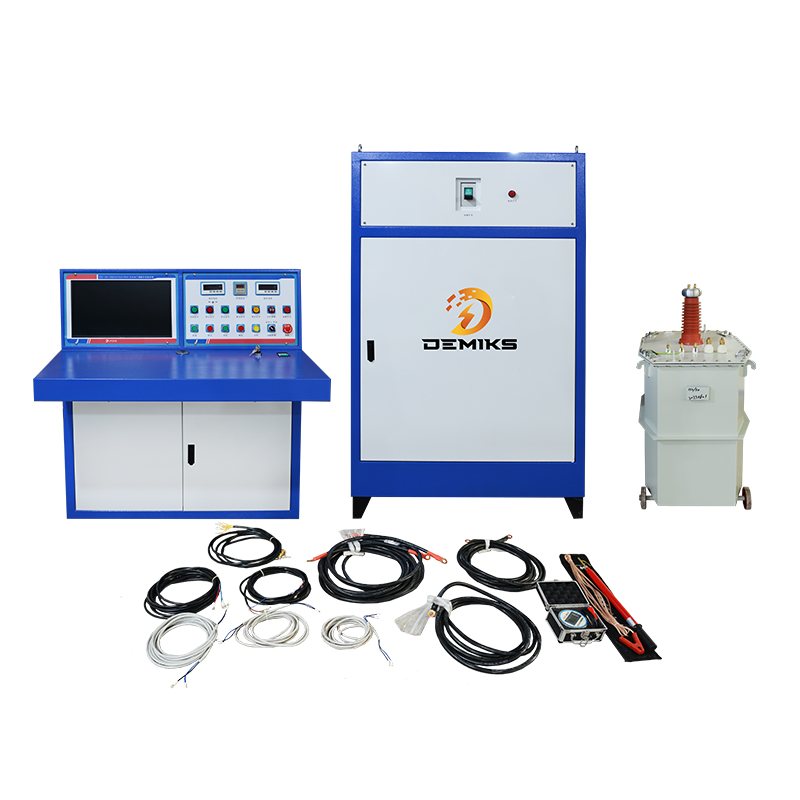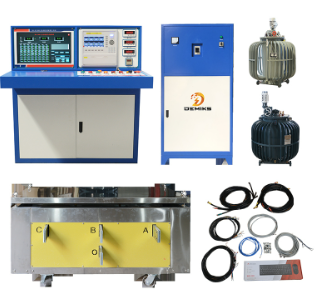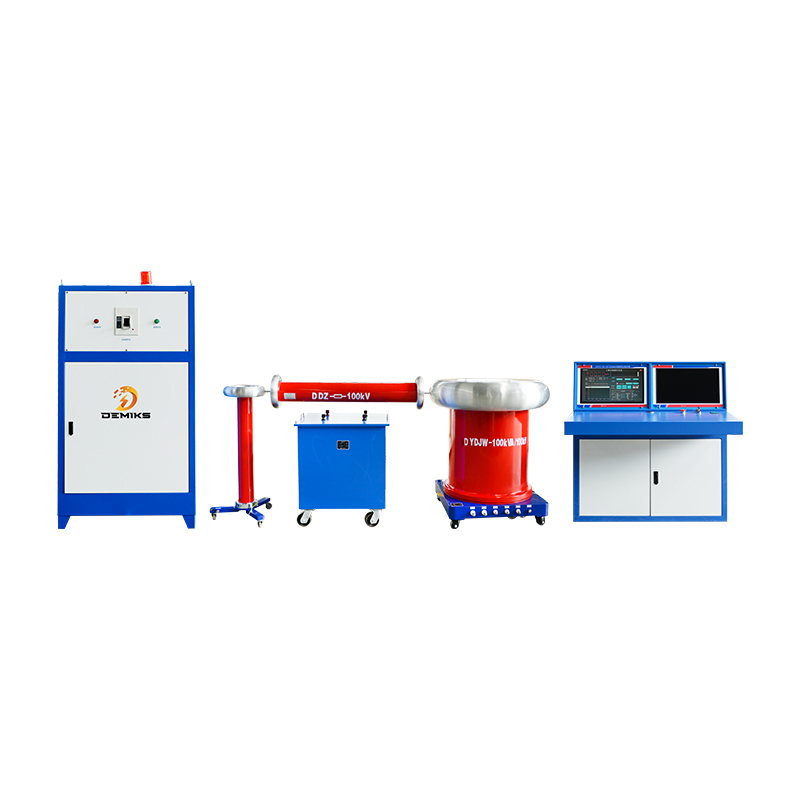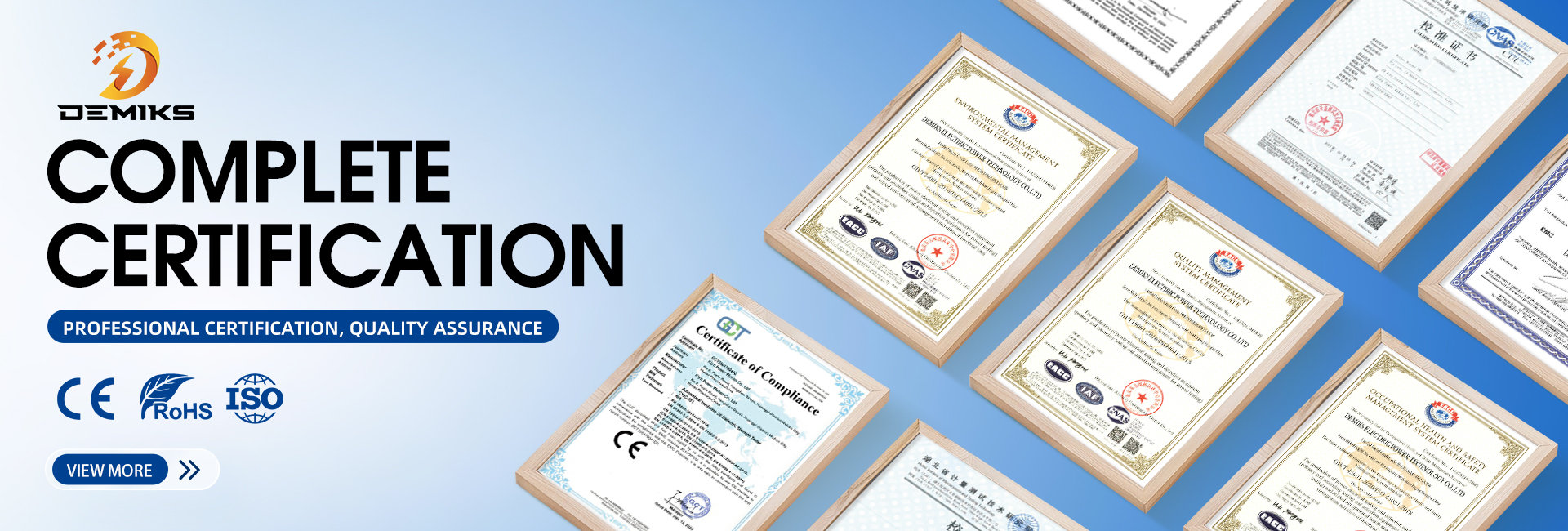What are the components of a high voltage cable test procedure
High voltage tester manufacturer deimiks recognises that high voltage cables (typically 1kV and above) need to be rigorously tested to ensure insulation integrity, correct installation and long-term reliability. The following step-by-step test procedures are based on the IEC 60502, IEEE 400 and IEC 60840 standards.
1. Pre-Testing Checks
Before conducting electrical tests, perform:
✔ Visual Inspection – Check for physical damage, sheath integrity, and termination/ joint quality.
✔ Continuity Test – Verify conductor continuity using a multimeter.
✔ Earth Bonding Test – Ensure proper grounding of cable screens/sheaths.
2. Insulation Resistance Test (Megger Test)
Purpose: Checks insulation quality between conductors and earth.
• Test Instrument: 5kV or 10kV Megohmmeter (depending on cable rating).
• Test Voltage:
◦ 1kV – 5kV Cables: 2.5kV DC
◦ 6kV – 35kV Cables: 5kV DC
◦ >35kV Cables: 10kV DC
• Test Duration: 1 minute (minimum).
• Acceptance Criteria:
◦ New Cables: >1000 MΩ/km (typical).
◦ In-Service Cables: >1 MΩ (minimum, but trend analysis is critical).
3. DC High-Potential (Hi-Pot) Test (For New Cables)
Purpose: Verifies insulation strength without AC stress.
• Test Voltage (IEC 60502):
◦ For XLPE Cables: 4 × U₀ (e.g., 11kV cable → 22kV DC for 15 min).
◦ For PILC Cables: 3 × U₀.
• Test Duration: 15 minutes (leakage current monitored).
• Acceptance Criteria:
◦ No breakdown.
◦ Leakage current stabilizes (no sudden increases).
⚠ Caution: Avoid DC testing on aged XLPE cables (risk of space charge accumulation).
4. Tan Delta (Dissipation Factor) Test
Purpose: Measures insulation aging/moisture.
• Test Method: Apply AC voltage (typically 0.5U₀ to 2U₀) and measure dielectric losses.
• Acceptance Criteria:
◦ New XLPE Cables: <0.1% tan δ.
◦ Aged Cables: <1% (investigate if >2%).
5. Partial Discharge (PD) Test
Purpose: Detects insulation defects (voids, cracks).
• Test Method: Apply AC voltage (U₀ or higher) and measure PD magnitude (pC).
• Acceptance Criteria:
◦ New Cables: <10 pC (IEC 60840).
◦ In-Service Cables: <50 pC (investigate if higher).
6. VLF (Very Low Frequency) Test (For Aged Cables)
Purpose: AC testing alternative for service-aged cables (0.1Hz instead of 50/60Hz).
• Test Voltage: 1.5U₀ to 2U₀ (e.g., 22kV cable → 33kV VLF).
• Test Duration: 15-60 minutes.
• Acceptance Criteria: No breakdown, stable leakage current.
7. Time Domain Reflectometry (TDR) Test
Purpose: Locates cable faults (opens, shorts, impedance mismatches).
• Test Instrument: TDR meter.
• How It Works: Sends a pulse and measures reflections.
8. Sheath Integrity Test (For Metallic Sheath Cables)
Purpose: Checks for sheath damage (moisture ingress risk).
• Test Method: Apply 1kV DC between sheath and earth.
• Acceptance Criteria: >1 MΩ (minimum).
9. Commissioning & Final Checks
✔ Phasing Test – Ensures correct phase sequence.
✔ Thermal Imaging – Checks for hot spots at terminations/joints.
✔ Documentation – Compare results with factory test reports.
Testing Standards
• IEC 60502 (Cables up to 30kV).
• IEC 60840 (Cables >30kV).
• IEEE 400 (Field testing & diagnostics).
The above content is published by demiks, please specify, demiks is a substation equipment manufacturer, specializing in the production of high-voltage tester, transformer test equipment, circuit breaker test equipment, relay tester, SF6 gas analyser, cable fault tester and other products, if you have power test testing needs, please feel free to contact demiks power science and technology limited company or send an email! Give us: contact@demikspower.com
 Relay Protection Testing and Commissioning Gu
Relay Protection Testing and Commissioning Gu
 how to test microwave transformer
how to test microwave transformer
 how to reset circuit breaker with test button
how to reset circuit breaker with test button
 high voltage cable testing standards
high voltage cable testing standards




